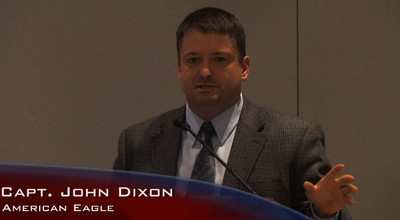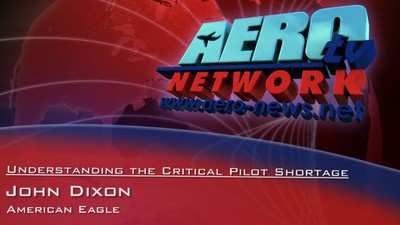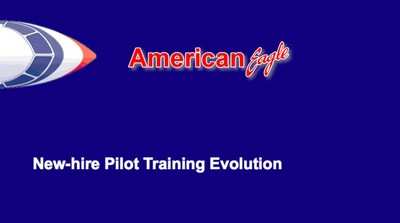We've been hearing about it for years... a pilot shortage... a
critical one, at that. For many in the aviation community, it
sounded like good news... at least if you were on the bottom rungs
of the pilot hiring ladder and working desperately to climb your
way up. However; after engaging in discussions thorough the
industry over the last year and in attending a particularly pointed
(and very well-organized) presentation at the FAA Forecast
Conference some months ago, ANN and Aero-TV are left with the
troubling impression that aviation has a BIG problem on its
hands.

The session devoted to discussing the Pilot Supply was, as
indicated earlier, exceptionally produced and wholly on target. The
session was presented by Moderator Peter J. Wolfe, Executive
Director, Professional Aviation Board of Certification (PABC), and
augmented by presentations delivered by Kit Darby, President, AIR,
Inc, Captain Paul Rice, First Vice President, Air Line Pilots
Association, International, Ron Levy, University Aviation
Association, John Dixon, Director of Pilot Recruitment for American
Eagle.

The fourth presentation was presented by John Dixon, Director of
Pilot Recruitment for American Eagle. Dixon provided the viewpoint
taken by a major company that is hiring pilots now... and will
definitely do so in the future. Dixon noted that since 2005,
American Eagle’s new hire mean flight times have gone from
1500 hours total flight time with 300 hours of multi-engine stick
time to 1000 hours of total flight time, of which 100 must be
multi-engine. During that time American Eagle has trained over 800
new-hires, and has made significant changes to its training program
to ensure the safety and standards of its new-hire pilots. They
have added an 11th simulator training session, included 4
observation flights to the curriculum, and increased Initial
Operating Experience from 25 hours to 50 hours.

Dixon explained that these changes have prevented a degradation
in new hire training performance or safety. In 2007 they began
using pre-employment regional jet training programs to prepare new
hire pilots as means continue to drop. He added that Regional jet
training programs are designed to teach perspective First Officers
advanced skills such as Crew Resource Management, Flight management
and guidance systems, transport category aircraft systems, and high
density airport operations. These programs are typically 3 to 8
weeks in duration and are offered by many college programs and
flight training schools.

The typical AmEagle 3 week program is comprised of:
- 6 hours multi-engine airplane check
- 40 hours of ground school
- 32 hours in an advanced FTD / Simulator
- 14 flight briefing
Dixon tells ANN that graduates of these programs are superior in
training performance to those without this training. He also stated
that if pilot supply and demand continues to behave as it has for
the last few years, advanced training programs will become more and
more necessary.
So... are you getting the picture that there are items to be
concerned about in terms of where our future pilots are coming
from? You should be. The situation is troublesome, answers are few
and aviation safety can only be negatively impacted if the
situation is not dealt with. Not sure about that? Well... load up
Part Five of our series on Understanding the Pilot Shortage and see
if you don't agree that this is an issue that needs urgent
attention.
E-I-C Note: This is the fifth in an extensive series on this
topic... each of which is presented every Monday (barring special
programming requirements for breaking news or special event
coverage, like last week's NBAA event) until completed...
 ANN FAQ: Contributing To Aero-TV
ANN FAQ: Contributing To Aero-TV Aero-News: Quote of the Day (12.10.25)
Aero-News: Quote of the Day (12.10.25) ANN's Daily Aero-Term (12.10.25): North Atlantic High Level Airspace (NAT HLA)
ANN's Daily Aero-Term (12.10.25): North Atlantic High Level Airspace (NAT HLA) Airborne 12.08.25: Samaritans Purse Hijack, FAA Med Relief, China Rocket Fail
Airborne 12.08.25: Samaritans Purse Hijack, FAA Med Relief, China Rocket Fail Airborne-Flight Training 12.04.25: Ldg Fee Danger, Av Mental Health, PC-7 MKX
Airborne-Flight Training 12.04.25: Ldg Fee Danger, Av Mental Health, PC-7 MKX






